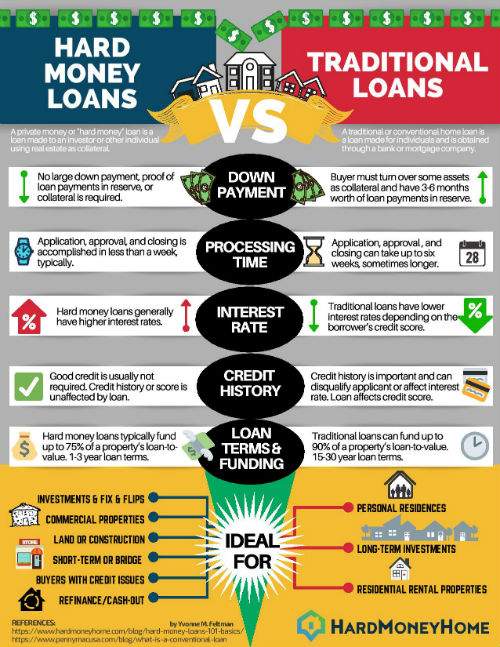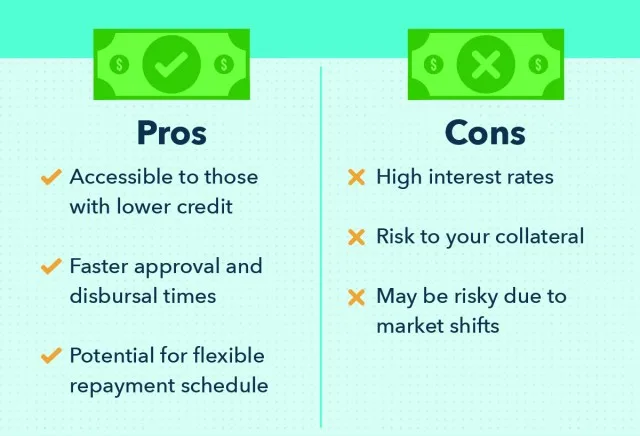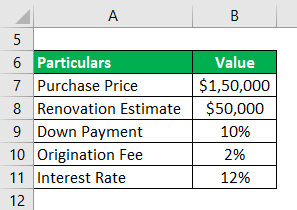When considering a hard money loan, one of the crucial factors to consider is the repayment period. Understanding how long you have to repay the loan is essential for planning and budgeting purposes. In this article, we will explore the repayment period for a hard money loan and provide valuable insights into what you can expect in terms of timelines and flexibility. By the end, you will have a comprehensive understanding of the repayment period and be equipped to make informed decisions regarding your hard money loan.
The Basics of a Hard Money Loan
A hard money loan is a type of loan that is typically used for real estate investments. Unlike traditional loans, which are obtained from banks or credit unions, hard money loans are funded by private individuals or companies. These loans are often used by borrowers who are unable to qualify for a traditional loan due to factors such as credit history or income.
Definition and Purpose of a Hard Money Loan
A hard money loan is a short-term loan that is secured by real estate. It is typically used by borrowers who need quick financing or who do not qualify for a traditional loan. The term “hard money” refers to the fact that these loans are funded by private individuals or companies, rather than traditional lenders such as banks or credit unions.
The purpose of a hard money loan is to provide borrowers with the funds they need to purchase or renovate a property. This can include purchasing an investment property, funding a house flip, or financing a property renovation project. Hard money loans are often used by real estate investors who need access to quick funding in order to take advantage of time-sensitive opportunities.
Characteristics and Differences from Traditional Loans
There are several characteristics that differentiate hard money loans from traditional loans. First, hard money loans are typically funded by private individuals or companies, while traditional loans are obtained from banks or credit unions. This means that the approval process for a hard money loan is often quicker and more flexible than that of a traditional loan.
Another key difference is the collateral used to secure the loan. In a traditional loan, the collateral is usually the property being purchased. However, in a hard money loan, the collateral is often the property being purchased, as well as any other real estate that the borrower owns. This additional collateral provides the lender with added security in the event that the borrower defaults on the loan.
Additionally, hard money loans often have higher interest rates and shorter repayment periods than traditional loans. This is because hard money loans are considered higher risk due to factors such as the borrower’s credit history or income. The higher interest rates and shorter repayment periods help to mitigate this risk for the lender.
Factors Affecting the Repayment Period
The repayment period for a hard money loan can vary depending on several factors. It is important for borrowers to understand these factors in order to determine the most appropriate repayment period for their specific needs.
Loan Amount
The loan amount is one of the most significant factors that can affect the repayment period for a hard money loan. In general, larger loan amounts will have longer repayment periods. This is because larger loan amounts often correspond to larger real estate purchases or renovation projects, which may require more time to complete and generate a return on investment.
Smaller loan amounts, on the other hand, may have shorter repayment periods. This is because smaller loan amounts are typically used for smaller real estate purchases or renovation projects, which may be completed more quickly.
Borrower’s Financial Situation
The borrower’s financial situation can also impact the repayment period for a hard money loan. Lenders will often consider factors such as the borrower’s credit history, income, and assets when determining the appropriate repayment period.
Borrowers with strong financial situations, including a high credit score and a stable income, may be able to qualify for longer repayment periods. This is because they present a lower risk to the lender and are more likely to be able to make the necessary payments over a longer period of time.
On the other hand, borrowers with weaker financial situations may be limited to shorter repayment periods. This is because they may present a higher risk to the lender and may be less likely to be able to make the necessary payments over a longer period of time.
Property Type and Value
The type and value of the property being purchased or renovated can also impact the repayment period for a hard money loan. Properties with higher values or greater potential for appreciation may qualify for longer repayment periods. This is because lenders may be more willing to extend the repayment period in order to allow the borrower to benefit from the property’s increased value over time.
On the other hand, properties with lower values or limited potential for appreciation may be limited to shorter repayment periods. This is because lenders may be less willing to extend the repayment period if there is a higher risk that the property may not generate a sufficient return on investment.
Loan Terms and Agreement
Finally, the specific terms and agreement of the hard money loan can also determine the repayment period. The terms and agreement will outline the interest rate, payment schedule, and other details of the loan. Borrowers should carefully review these terms and agreement to ensure that the repayment period aligns with their financial situation and goals.

Typical Repayment Periods for Hard Money Loans
The repayment period for a hard money loan can vary depending on factors such as the loan amount, borrower’s financial situation, property type and value, and the specific terms and agreement of the loan. However, there are generally three categories of repayment periods for hard money loans: short-term, medium-term, and long-term.
Short-Term Hard Money Loans
Short-term hard money loans are typically repaid within six to 12 months. These loans are often used for quick real estate transactions or renovation projects that can be completed and sold within a relatively short period of time.
Medium-Term Hard Money Loans
Medium-term hard money loans have repayment periods of one to three years. These loans are often used for more extensive renovation projects or longer-term real estate investments that may require additional time to generate a return on investment.
Long-Term Hard Money Loans
Long-term hard money loans have repayment periods of three to five years or more. These loans are sometimes used for larger real estate investments or renovation projects that may require more time to complete and generate a return on investment.
Short-Term Hard Money Loans
Duration and Purpose
Short-term hard money loans have repayment periods of six to 12 months. They are typically used for quick real estate transactions or renovation projects that can be completed and sold within a relatively short period of time.
The purpose of a short-term hard money loan is to provide borrowers with the funds they need to quickly purchase or renovate a property and then sell it for a profit. These loans are often used by real estate flippers who buy distressed properties, renovate them, and then sell them for a higher price.
Typical Repayment Periods
As mentioned earlier, short-term hard money loans typically have repayment periods of six to 12 months. The exact repayment period will depend on factors such as the loan amount, borrower’s financial situation, and property type and value.
The short repayment period of these loans is designed to align with the quick turnaround time of real estate flipping. Flippers aim to complete their renovations and sell the property as quickly as possible in order to maximize their profits. The short-term nature of these loans allows flippers to quickly access the funds they need and repay the loan once the property is sold.

Medium-Term Hard Money Loans
Duration and Purpose
Medium-term hard money loans have repayment periods of one to three years. They are typically used for more extensive renovation projects or longer-term real estate investments that may require additional time to generate a return on investment.
The purpose of a medium-term hard money loan is to provide borrowers with the funds they need to complete larger renovation projects or invest in real estate opportunities that may require more time to generate a return on investment. These loans are often used by real estate investors who purchase properties in need of significant repairs or who invest in properties that may take longer to appreciate in value.
Typical Repayment Periods
Similar to short-term hard money loans, the repayment period for medium-term hard money loans can vary depending on factors such as the loan amount, borrower’s financial situation, and property type and value. However, these loans generally have repayment periods of one to three years.
The longer repayment period of medium-term hard money loans allows borrowers to have more time to complete their renovation projects or wait for their real estate investments to appreciate in value. This flexibility can be beneficial for borrowers who require a longer period of time to achieve their investment goals.
Long-Term Hard Money Loans
Duration and Purpose
Long-term hard money loans have repayment periods of three to five years or more. They are sometimes used for larger real estate investments or renovation projects that may require more time to complete and generate a return on investment.
The purpose of a long-term hard money loan is to provide borrowers with the funds they need for larger real estate investments or renovation projects that may require an extended period of time. These loans are often used by real estate developers who purchase land for development, or investors who engage in larger-scale renovation projects.
Typical Repayment Periods
The repayment period for long-term hard money loans can vary depending on factors such as the loan amount, borrower’s financial situation, and property type and value. However, these loans generally have repayment periods of three to five years or more.
The longer repayment period of long-term hard money loans allows borrowers to have ample time to complete their real estate projects and generate a return on investment. This can be beneficial for borrowers who are involved in larger projects that require more time and resources to complete.

Factors Influencing the Choice of Repayment Period
When determining the most appropriate repayment period for a hard money loan, borrowers should consider several factors. These factors can help borrowers align the repayment period with their financial capability, investment strategy and goals, and property renovation timeline.
Borrower’s Financial Capability
One of the most important factors to consider when choosing a repayment period is the borrower’s financial capability. Borrowers should assess their current financial situation and determine how much they can realistically afford to pay each month. This will help borrowers avoid taking on a loan with a repayment period that may be too long or too short for their financial capabilities.
Investment Strategy and Goals
Another factor to consider is the borrower’s investment strategy and goals. Borrowers should evaluate their investment strategy and determine how long they anticipate holding onto the property or making renovations. This will help borrowers choose a repayment period that aligns with their investment timeline and goals.
For example, if a borrower plans to flip a property within one year, a short-term hard money loan with a repayment period of six to 12 months may be the most suitable option. On the other hand, if a borrower plans to hold onto a property for several years, a longer-term hard money loan with a repayment period of three to five years or more may be more appropriate.
Property Renovation Timeline
The timeline for completing property renovations should also be taken into consideration when choosing a repayment period. Borrowers should carefully assess the scope of their renovation project and determine how much time they will need to complete it. This will help borrowers choose a repayment period that allows them sufficient time to complete the renovations and generate a return on investment.
For example, if a borrower is undertaking a major renovation project that will take one to two years to complete, a medium-term hard money loan with a repayment period of one to three years may be the best option. This will provide the borrower with the necessary time to complete the renovations and sell the property.
Advantages and Disadvantages of Shorter Repayment Periods
Advantages
One of the primary advantages of shorter repayment periods is that borrowers can pay off the loan more quickly. This can help borrowers save money on interest payments and reduce their overall debt burden. Additionally, shorter repayment periods may be more suitable for borrowers who prefer to quickly complete their real estate transactions or renovation projects.
Disadvantages
One of the potential disadvantages of shorter repayment periods is that the monthly payments may be higher. This can make it more difficult for borrowers with limited financial resources to make the necessary payments on time. Additionally, shorter repayment periods may not be suitable for borrowers who require more time to complete their real estate transactions or renovation projects.

Advantages and Disadvantages of Longer Repayment Periods
Advantages
One of the primary advantages of longer repayment periods is that borrowers have more time to repay the loan. This can make it easier for borrowers with limited financial resources to make the necessary payments on time. Additionally, longer repayment periods may be more suitable for borrowers who require more time to complete their real estate transactions or renovation projects.
Disadvantages
One of the potential disadvantages of longer repayment periods is that borrowers may end up paying more in interest over the life of the loan. This is because the longer the repayment period, the more interest that will accumulate. Additionally, longer repayment periods may not be suitable for borrowers who prefer to quickly complete their real estate transactions or renovation projects.
Conclusion
The repayment period for a hard money loan can vary depending on factors such as the loan amount, borrower’s financial situation, property type and value, and the specific terms and agreement of the loan. Short-term hard money loans typically have repayment periods of six to 12 months, while medium-term loans have repayment periods of one to three years, and long-term loans have repayment periods of three to five years or more.
When choosing a repayment period, borrowers should consider factors such as their financial capability, investment strategy and goals, and property renovation timeline. By carefully assessing these factors, borrowers can choose a repayment period that aligns with their specific needs and helps them achieve their investment goals.




